About Me:
My name is Lucy and I’m studying English Literature and Classical Literature and Civilisation. I worked on the Collaborative Research Internship Project, ‘Creatures of the Nile’.
Over this year’s summer period, I was lucky enough to secure a collaborative research internship at the Eton Myers Collection in Selly Oak. The Eton Myers collection is an amazingly diverse and extensive selection of Ancient Egyptian artefacts, which are on loan to the University of Birmingham from Eton College. Having gained a particular interest in Ancient Egypt throughout my current studies at UOB, I knew that the opportunity to work so closely with Egyptian artefacts was not one I could pass on.
The particular research I was involved with had the cryptic title, ‘The Creatures of the Nile’. After speaking with my intern managers, Dr Leire Olabarria and Dr Carolyn Routledge, I learned that I would be working with animal amulets. This was great news to me! Not only is the Egyptian animal art some of my favourites to look at, but amulet forms play a vital role in understanding Ancient Egyptian culture both in life and in death. I was eager and excited to begin my research project and to learn more about the art forms and artefacts which were so important in everyday life.
Arriving at the Eton Myers Collection, I was impressed just by the complexity the room the collection was stored in. Not only were there display cabinets across the room, but there were further draws with even more artefacts within. Learning about the specific conditions the artefacts have to be kept in, as well as how delicately and sparingly they must be handled. Admittedly, this did make me nervous. I am notoriously clumsy, but I was determined to be exceptionally careful! Thankfully, while working with the collection twice, I have left all my clumsiness behind.
Dr Carolyn, who is in charge of the upkeep of the collection, explained that my research project would take place in two parts. The first was to begin documenting a selection of ten animal amulets, so that we were able to fill in the details in the Mimsy database – the system which allows researchers (and Egyptology – enthusiasts!) to view the artefacts and all their related information online. This was overwhelming at first. Lots of the artefacts are not dated and the Eton Myers Collection is not well documented regarding when and where certain pieces were found. To make the task slightly more manageable and organised, I selected amulets of the same animal, so that I could research them all together. For example, I chose a selection of three frog amulets, and then four snake amulets too. Aren’t they cute?!
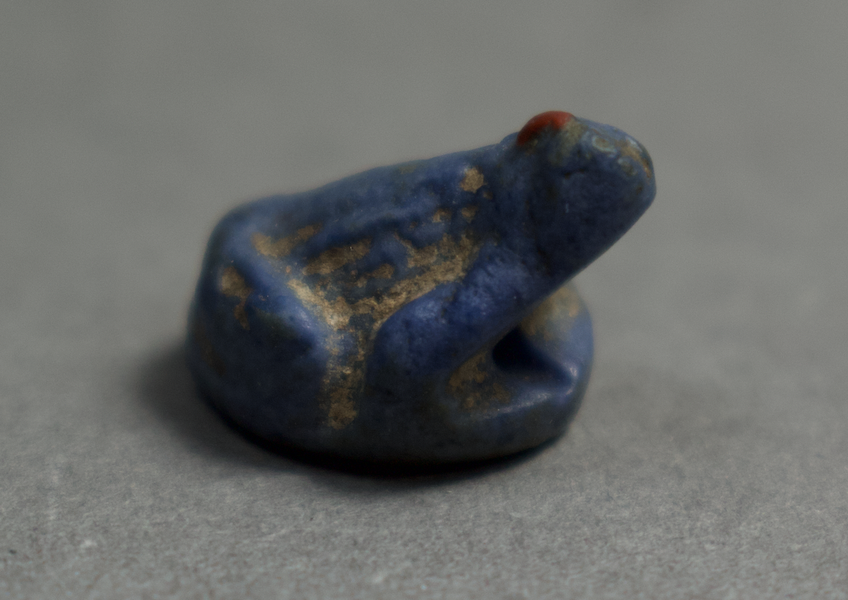
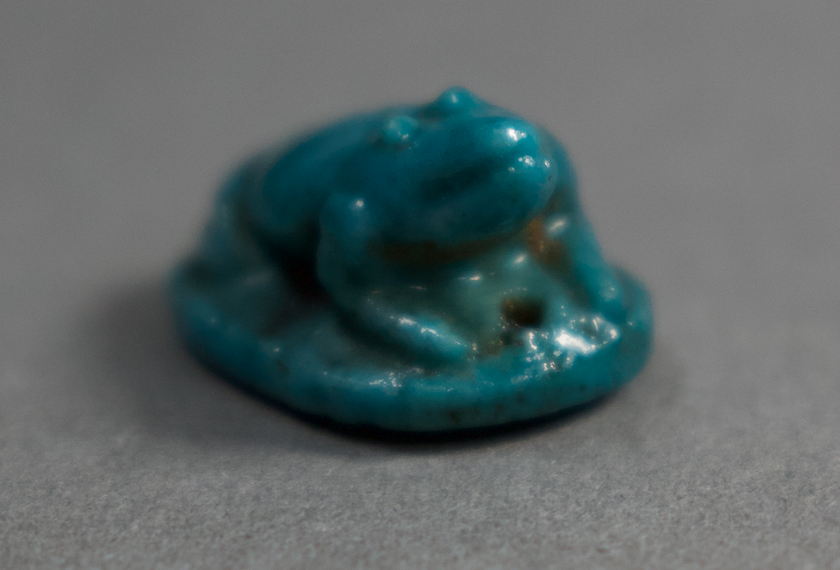
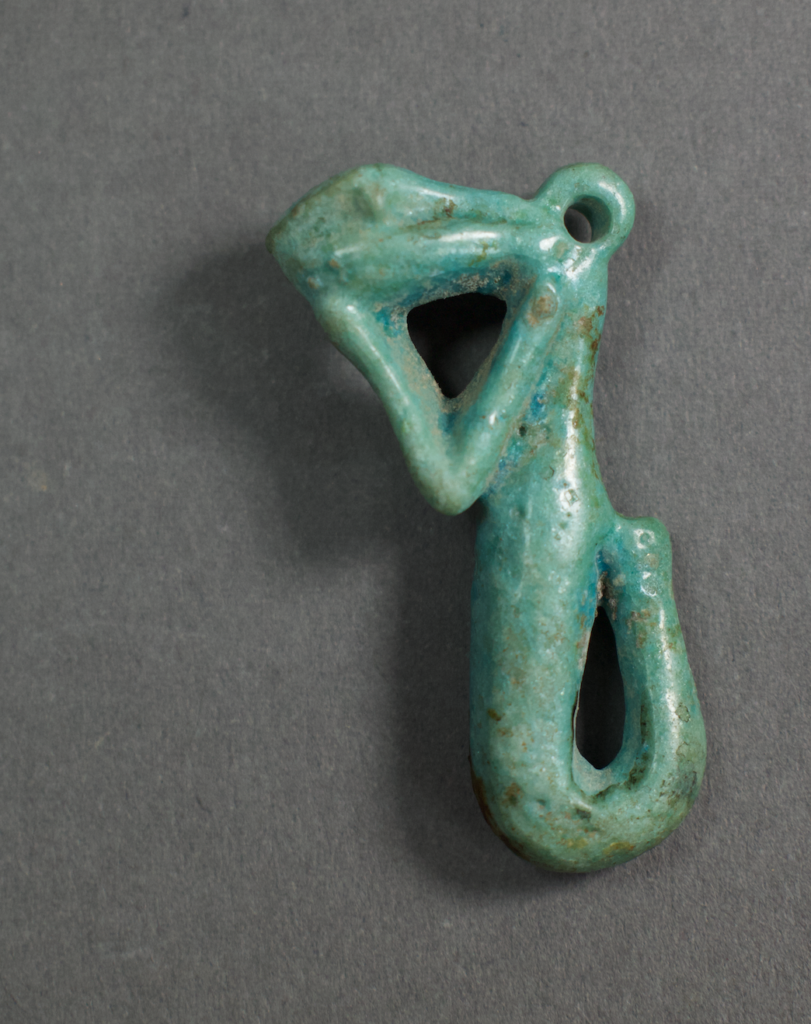
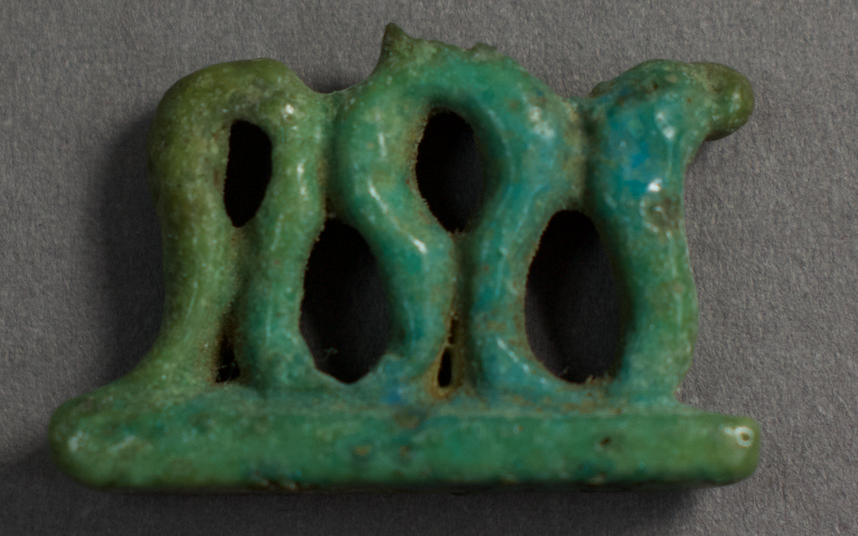
I began by researching the cultural significance of frogs in Ancient Egypt. I did this by using a combination of sources, such as amulet guides, museum catalogues and information from other similar amulets. It was so fascinating to learn that frogs could be used as symbols of fertility, regeneration and growth. When worn, frog amulets would provide fertility and rejuvenation to the wearer. Dating (meaning giving timeframe as to when the amulets were created) was a little harder for me. It was time-consuming, as it required finding a lot of similar examples of frog amulets from other museum catalogues. These amulets needed to be similar not only in looks and shape, but material too. Was it made of faience of lapis? Did it have a base or was it pierced so that it could be worn? If it was pierced, was it pierced longitudinally or latitudinally? However, giving dates to these amulets was exceptionally rewarding – especially when finding an object which matched mine really well! Completing this researching and document task not only benefited the collection, but ultimately me, and my skills in academic researching. I learned new skills in organisation, thoroughness and time-management.
The second part of my project was to create an exhibition. This involved setting up an entire display cabinet with all of the amulets I had studied across the course of my internship. Overall, I had around 20 amulets to display, ranging from my frogs to a crocodile, falcons and baboons. I was the most excited for this section of the project, as I love to work creatively. I spent time creating museum labels which were both engaging and informative. I was important to me that my exhibition made it easy to learn more about the amulets, but also was pleasing to look at. To see my final display, you’ll have to visit the Eton Myers Collection at Selly Oak on one of their open days! See their Instagram for more information!
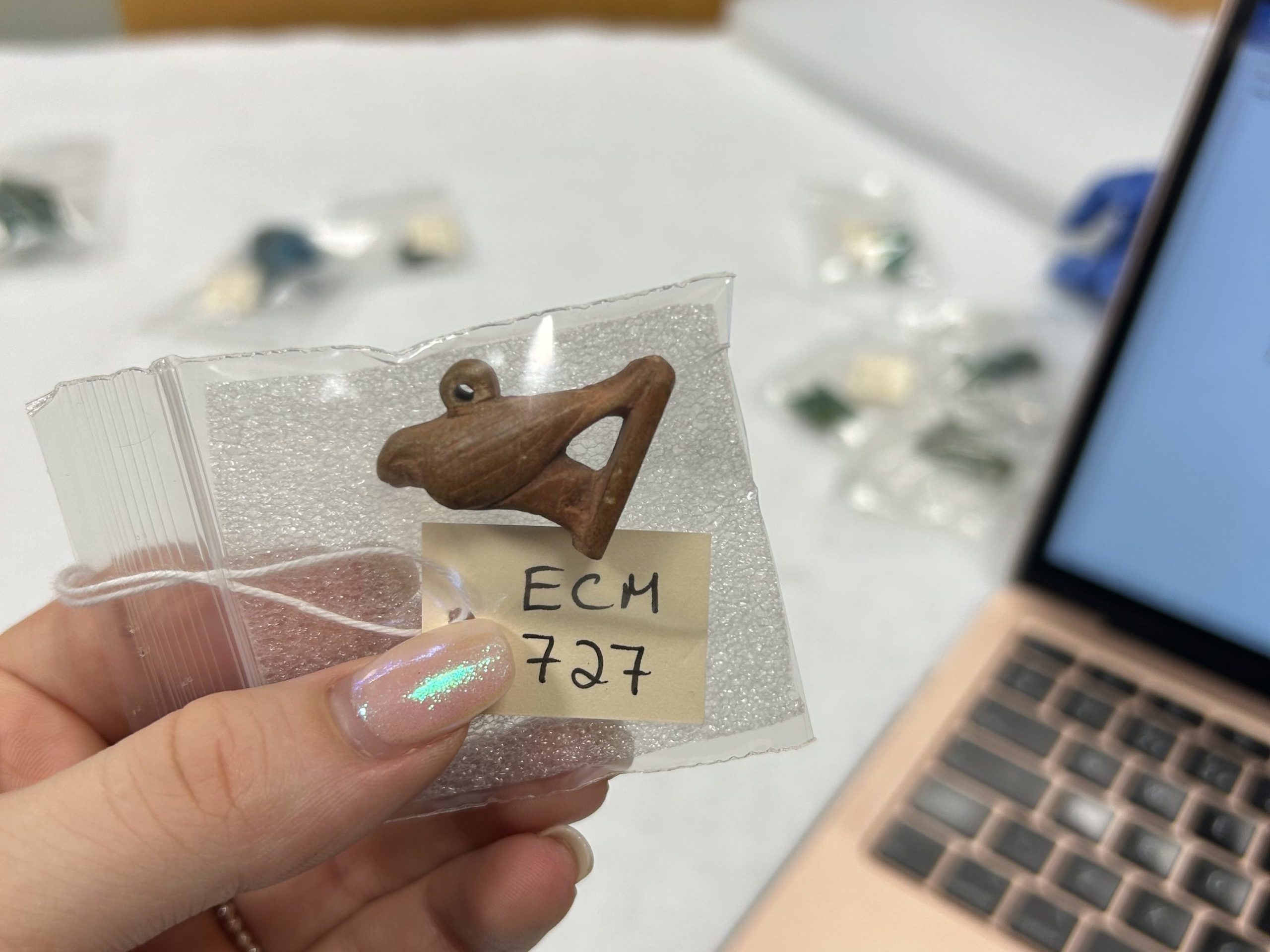
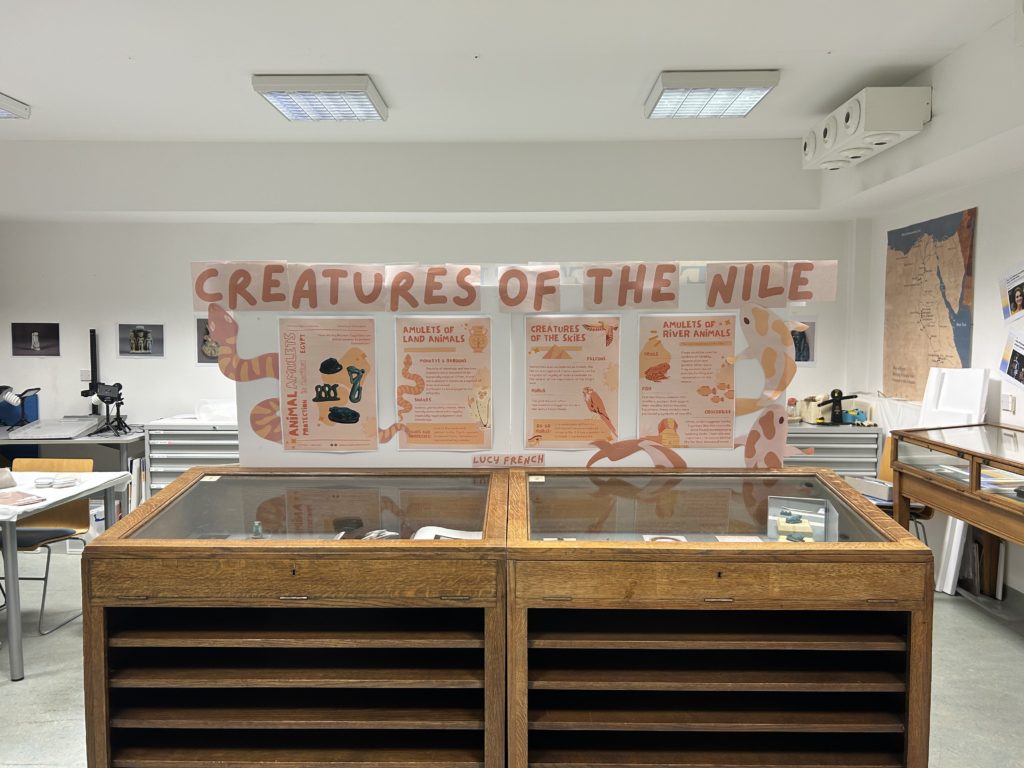
I have also created an academic research poster to summarise what I have learned about Ancient Egyptian amulets, which can be found on the third floor of the Arts Building, at the main university campus. I have valued internship immeasurably, and it is an experience I would highly recommend to any other students looking to gain the up most from their university studies.
ETON MYERS COLLECTION INSTAGRAM: @etonmyerscollectionuob
Lucy French, BA English, Classical Literature and Civilisation
